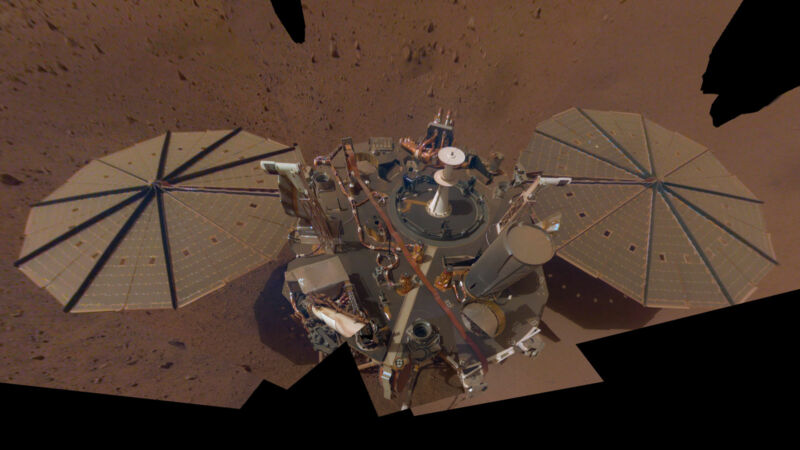
Enlarge / A selfie taken by the InSight Lander. (credit: NASA/JPL-Caltech)
Today, NASA announced that it was giving up on its attempts to place a temperature sensor several meters under the Martian surface. Part of the agency’s InSight lander, the hardware was supposed to be placed deep enough to avoid the influence of Mars’ weather, seasons, and daily temperature changes. But because of the unusual conditions at the landing site, the hardware never made it below the surface.
The InSight lander carried several instruments meant to provide a clearer picture of Martian geology. One of those instruments, the SEIS seismometer, has been successfully tracking marsquakes to provide a better perspective on Mars’ structure and the local composition under the surface near the landing site. A second measures the wobbling of Mars’ axis of rotation, which will be influenced by a combination of the red planet’s composition and the gravitational influences of the rest of the Solar System.
InSight’s other major experiment is the Heat Flow and Physical Properties Package, or HP3. While previous landers hadn’t put any hardware deeper than about 20 centimeters, HP3 was designed to operate several meters below the Martian surface. From there, the fluctuations on the surface would be somewhat averaged out, and HP3 could measure the heat flow from the Martian interior to the surface. This would allow an estimate of the energy still left in the Martian core from a combination of its formation and radioactivity, a key element in understanding what geological activity might still be possible there.





